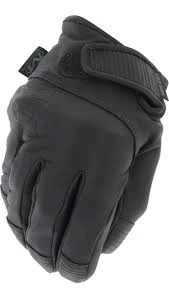safety clothing for employees
The Importance of Safety Clothing for Employees
In any workplace, the safety and well-being of employees should be a primary concern for employers. One crucial aspect of ensuring a safe working environment is the provision of appropriate safety clothing. Safety clothing is specifically designed to protect employees from various workplace hazards, and its importance cannot be overstated. This article discusses the necessity of safety clothing for employees, the types of safety clothing available, and best practices for its implementation in the workplace.
Understanding Workplace Hazards
Different industries present unique hazards that can pose significant risks to employees. For instance, construction sites expose workers to falling objects, heavy machinery, and extreme weather conditions. In manufacturing, employees may encounter chemical spills, loud noise, and sharp objects. In healthcare settings, where exposure to biological hazards is prevalent, personal protective equipment (PPE) is essential. Without appropriate safety clothing, employees may face injuries, illnesses, and even fatalities. Therefore, it is crucial for employers to assess the specific risks within their work environment and provide suitable attire.
Types of Safety Clothing
Safety clothing encompasses a wide range of garments designed to protect employees from various hazards. Some common types include
1. High-Visibility Clothing These are essential for workers in areas with heavy machinery or vehicular traffic. High-visibility vests and jackets are made from bright colors and reflective materials, ensuring that employees are easily seen.
2. Flame-Resistant Clothing In industries like oil and gas, where employees may be exposed to flames or electrical arcs, flame-resistant clothing can prevent serious burn injuries.
3. Chemical Protective Clothing Workers dealing with hazardous substances, such as those in laboratories or chemical manufacturing, require specialized suits made of materials resistant to chemicals.
4. Safety Footwear Steel-toed boots and slip-resistant shoes are critical for preventing foot injuries from heavy objects or slips and falls.
safety clothing for employees

6. Gloves and Eye Protection Depending on the job, workers may need gloves made of various materials (like latex, nitrile, or leather) and safety goggles or face shields to protect against chemicals, hot materials, or flying debris.
Best Practices for Implementation
To maximize the effectiveness of safety clothing in the workplace, employers should implement several best practices
1. Conduct Regular Risk Assessments Employers should routinely evaluate their work environment to identify potential hazards and determine the appropriate safety clothing for their employees.
2. Provide Training and Education Workers need to understand the importance of wearing safety clothing and how to use it properly. Regular training sessions can keep employees informed about new safety protocols and the latest protective gear available.
3. Ensure Proper Fit and Comfort Safety clothing should fit well and allow for ease of movement. Ill-fitting clothing can be uncomfortable and may deter employees from wearing it consistently. Employers should offer a range of sizes and styles to accommodate all employees.
4. Establish a Zero-Tolerance Policy Implementing a strict policy requiring the use of safety clothing can reinforce its importance. Regular safety audits can help ensure compliance and identify areas for improvement.
5. Make It Accessible Employers should ensure that safety clothing is easily accessible to all employees. This may include providing lockers or storage areas where employees can store their gear or ensuring that high-visibility clothing is available on-site.
Conclusion
The importance of safety clothing for employees cannot be understated. It is a fundamental aspect of maintaining a safe and productive workplace. By understanding the specific hazards present in their industries and providing appropriate protective gear, employers can safeguard their workforce against injuries and ensure the well-being of their employees. Investing in safety clothing is not just a legal obligation but also a moral responsibility toward those who contribute to the success of the business. In conclusion, a commitment to safety clothing not only enhances employee morale but also fosters a culture of safety and care in the workplace.
-
Top HDPE Safety Helmets - Lightweight, Durable Head Protection
NewsAug.01,2025
-
Top AI Safety Clothing with GPT-4 Turbo | Smart Protection
NewsJul.31,2025
-
Face Shield Safety Helmet with GPT-4 Turbo AI Safety
NewsJul.31,2025
-
CE Working Clothing for Construction & Welding Safety
NewsJul.30,2025
-
Premium Safety Helmet with Visor for Construction & Industrial Use
NewsJul.29,2025
-
High-Quality CE Working Clothing for Safety and Construction
NewsJul.29,2025
